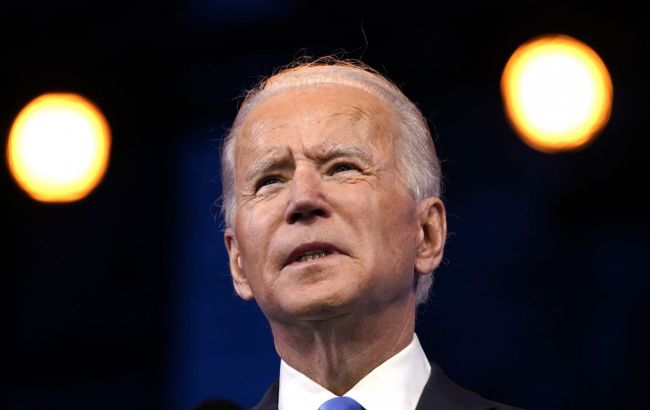Shutdown in USA - President's administration initiates countdown to shutdown
 The Joe Biden administration calls on Republicans to approve the budget (photo: Getty Images)
The Joe Biden administration calls on Republicans to approve the budget (photo: Getty Images)
The administration of U.S. President Joe Biden has initiated a countdown to a government shutdown. If the House of Representatives does not approve a budget deal within a few hours, government operations will be paralyzed.
RBC-Ukraine explains what a shutdown is and how it can affect U.S. support for our country.
During the preparation of the material, the following sources were used: the official Twitter account of the White House, publications from The Washington Post, The Hill, as well as statements from representatives of the State Department and the Pentagon.
"The right-wing Republicans in the House of Representatives are increasing their demands to destroy programs that millions of hardworking families rely on. This is not a serious conversation. They have 13 hours to do their job and fund the government," the White House statement says.
Shutdown in the USA. What is it?
In the United States, there is a law that prohibits federal government agencies from operating if they do not have funding. A government shutdown occurs when Congress fails to approve and the President fails to sign budget agreements.
There is no single budget law in the U.S., and funding for all agencies and programs requires the passage of 12 separate bills, which can take a significant amount of time to negotiate and pass.
Recently, the House of Representatives rejected a temporary budget bill that would have allowed the government to operate at reduced spending levels for a month. If nothing changes soon, a government shutdown will occur starting on October 1.
How often do government shutdowns occur, and what are the consequences
Since 1976, there have been 21 government shutdowns in the United States, whereas before that, there were none. The reason for this increase is the growing polarization between the Democratic and Republican parties, which use government shutdowns for political bargaining both among themselves and with the White House.
During a government shutdown, most federal government employees are placed on unpaid furlough, meaning they are forced to take time off without pay. Only those involved in critical functions, such as law enforcement or air traffic control, remain at work. However, each federal agency has its own plan for operation during a shutdown, and members of Congress and the President are not affected by the shutdown.
In terms of economic consequences, it involves lost work hours and a reduction in economic activity. For example, in 2018-2019, a government shutdown resulted in losses of $11 billion.
The reason for this year's threat of a shutdown
The threat of a shutdown this year is associated with the position of ultra-right Republicans. Republicans, in general, hold the majority in the House of Representatives, and several dozen of them are considered staunch Trump supporters.
At the beginning of 2023, the appointment of House Speaker Kevin McCarthy was supported with the condition that his resignation could be initiated by the request of one congressman. He is compelled to consider the demands of ultra-right Republicans when it comes to budgetary matters, as he could lose his position.
Currently, Republicans are demanding significant cuts in federal spending, except for funds allocated for security and defense. Previously, they were outraged by agreements between McCarthy and the White House to raise the debt ceiling without taking their demands into account. Now, they want budget deals to include funds for combating illegal immigration from Mexico.
Furthermore, these Republicans oppose providing additional aid to Ukraine.
How will the shutdown affect aid to Ukraine
In August, the White House requested over $43 billion in additional funding from Congress by the end of the year. Of this amount, $24 billion is intended for aid to Ukraine. However, due to the position of ultra-right Republicans, this proposal got stuck in the House of Representatives.
To resolve the situation, the Senate proposed allocating over $6 billion for Ukraine by mid-November, but Kevin McCarthy indicated that there would not be enough votes in the House even for such a compromise.
As reported by The Washington Post, today the House of Representatives will consider a proposal that would prevent a shutdown, allowing the government to operate for 45 days at the current spending level.
The bill includes increased spending for natural disasters, but it does not include any billion-dollar allocation for Ukraine.
According to The Hill, Republicans and Democrats have agreed to put the issue of an additional $300 million for Ukraine in the upcoming package for a separate vote.
What will happen to aid for Ukraine during a shutdown
As stated by Matthew Miller, a spokesperson for the U.S. Department of State, a government shutdown could complicate the delivery of military assistance because some officials simply won't be able to go to work.
"When certain people are not allowed to come to work, it can impact the speed of any deliveries," he emphasized.
At the same time, the State Department and the White House express confidence that bipartisan support for Ukraine will be maintained. According to Karine Jean-Pierre, a spokesperson for the Biden administration, the White House will continue to work with members of both parties to secure additional funding for Ukraine.
However, the Pentagon is concerned that a shutdown could slow down the pace of replacing weaponry sent to Ukraine. Without additional funding, the Pentagon has authorization to send up to $5 billion worth of arms and equipment from existing stocks.
One of the negative scenarios also includes the potential delay in the training of Ukrainian pilots for the F-16 aircraft.

